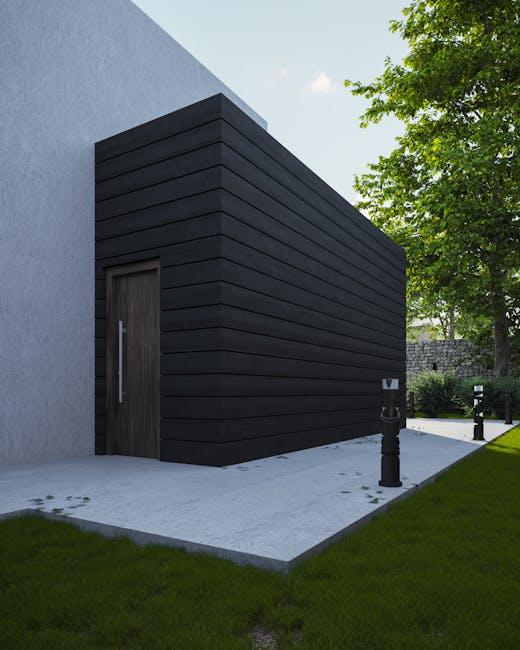In recent years, minimalist design has dominated the interior design landscape, praised for its clean lines, open spaces, and a focus on functionality. While this aesthetic offers an appealing sense of order and tranquility, it has increasingly come under scrutiny for its suitability in family settings. Critics argue that the very elements that define minimalist design—its sparse decor, neutral color palettes, and uncluttered environments—can inadvertently create spaces that feel cold and uninviting, particularly for families with young children. This article delves into the intersection of minimalist design trends and family life, exploring how the pursuit of simplicity and elegance may be sacrificing warmth and practicality. By examining the underlying principles of minimalism and their impact on daily family dynamics, we aim to uncover whether the minimalist ethos truly aligns with the vibrant, often chaotic reality of family living or if it leaves households yearning for a more personalized and comforting environment.
Impact of Minimalist Design on Family Dynamics
In the realm of interior design, minimalist aesthetics have long been celebrated for their clean lines, simplicity, and uncluttered spaces. However, when applied to family homes, this trend can inadvertently impact the dynamics within a household. Minimalist design, with its emphasis on reducing physical belongings and visual noise, can sometimes create environments that feel impersonal or overly controlled. For families, particularly those with young children, the absence of personal items or vibrant decor might stifle creativity and expression, making spaces feel less inviting.
- Lack of Personalization: Families often thrive in environments that reflect their individual members’ personalities and interests. Minimalist spaces, while aesthetically pleasing, may lack the warmth that personal items like family photos, children’s artwork, or quirky mementos provide.
- Reduced Functionality: The minimalist ethos of ‘less is more’ can sometimes lead to the removal of items that, while not essential, contribute to the functionality of a family home. A balance must be struck between maintaining an orderly space and ensuring that it remains practical for daily family activities.
- Emotional Connection: Spaces that are too sterile might inadvertently create a barrier to emotional connections. The absence of familiar objects or comforting clutter can make it challenging for family members to feel truly ‘at home’.
Ultimately, while minimalist design offers numerous benefits, such as reducing stress and promoting a sense of calm, it is crucial for families to adapt these principles in a way that fosters warmth and connectivity. Integrating personal touches and maintaining a flexible approach to minimalism can help create a harmonious family environment that supports both aesthetics and emotional well-being.

Creating Warmth and Functionality in Minimalist Spaces
Minimalism in design doesn’t have to mean sacrificing warmth and functionality, even in family-centric spaces. By incorporating a few strategic elements, you can create an environment that balances clean lines with cozy living. Start by introducing textural contrasts through the use of soft furnishings like plush throws and woven rugs, which add layers of warmth without cluttering the visual space. Consider the role of color as well; neutral tones can be complemented with earthy accents such as terracotta or olive green to bring a sense of natural comfort.
- Multi-functional Furniture: Invest in pieces that serve dual purposes, like a coffee table with storage or a sofa that converts into a bed.
- Lighting: Use a combination of ambient, task, and accent lighting to create depth and highlight different areas of the room.
- Natural Elements: Incorporate plants or wooden elements to bring in organic warmth and break up the starkness of minimalist designs.
By thoughtfully integrating these elements, minimalist spaces can become inviting sanctuaries that support family life without compromising on style. The key lies in creating a harmonious blend of functionality and aesthetic warmth, ensuring that every element serves a purpose while enhancing the overall ambiance.

Balancing Aesthetic and Practical Needs for Families
Finding the sweet spot between beauty and utility is a common challenge for families who love minimalist design but find it lacking in warmth and functionality. The stark lines and monochromatic palettes often associated with minimalism can sometimes feel uninviting. To strike a balance, consider incorporating natural elements and textured fabrics to soften the environment. Think wooden furniture, woven baskets, and cozy throws that maintain a clean aesthetic while adding layers of comfort.
- Multifunctional furniture: Opt for pieces that serve dual purposes, like a coffee table with hidden storage or a dining bench that doubles as a toy chest.
- Color accents: Introduce subtle color through accessories like pillows or artwork to break the monotony without cluttering the space.
- Durable materials: Choose fabrics and surfaces that withstand the wear and tear of family life, such as stain-resistant upholstery and scratch-proof flooring.
By carefully selecting these elements, families can enjoy a home that feels both lived-in and stylish. The goal is to create a space that meets the dynamic needs of family life without sacrificing the minimalist aesthetic that provides peace and order.
Integrating Personal Touches to Enhance Family Environments
Minimalist design, while sleek and modern, often lacks the warmth and character essential for a nurturing family environment. By integrating personal touches, you can transform these stark spaces into inviting sanctuaries. One effective strategy is to incorporate elements that reflect the family’s unique story. Consider gallery walls showcasing family photos or children’s artwork, which not only add color but also create a sense of belonging and pride. Handcrafted items, such as a quilt made by a grandparent or a custom-made dining table, can infuse a space with sentimental value, making it feel more like home.
- Layered Textures: Mix different materials like wood, wool, and metal to add depth and warmth.
- Personal Artifacts: Display family heirlooms or travel souvenirs that spark conversations and memories.
- Interactive Elements: Include a chalkboard wall or a puzzle table to encourage family interaction and creativity.
These elements not only soften the harsh lines of minimalist design but also make the environment more adaptable to the dynamic needs of family life. By thoughtfully integrating these personal touches, you create a space that is both functional and emotionally resonant.



